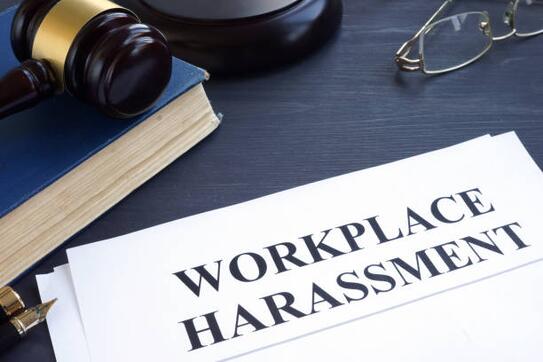NEW YORK, NY – Whether or not to report workplace harassment can be a difficult decision to make for employees who have been victimized, due to fear of retaliation or reputational damage. But a new study, co-authored by Columbia Business School Professor Laura Boudreau, finds that implementing a more secure reporting method can increase harassed employees’ willingness to come forward. When surveyors implemented a tactic known as hard garbling, there was a 288% increase in reporting of physical harassment, a 269% increase in reporting of sexual harassment, and a 46% increase in reporting threatening behavior.
“Under the status quo, victims stay silent, or they may have to take their complaint public and face retaliation from a colleague or supervisor,” said Laura Boudreau, Assistant Professor, at Columbia Business School. “This research shows that when companies adjust reporting to use hard-garbling, employees recognize that they have an added layer of protection in disclosure – ensuring companies get a more accurate picture of harassment and can take action more quickly. We hope our work encourages companies to improve their harassment reporting and take a proactive role.”
The research team, including Princeton University Professor Sylvain Chassang, Ben-Gurion University Professor Ada González-Torres, and University of Washington Professor Rachel Heath, partnered with an anonymous large-scale garment manufacturer in Bangladesh to conduct their research from September through December of 2021. In the study, Monitoring Harassment in Organizations, Professor Boudreau and the research team conducted a phone-based study compiling a total number of 2,141 survey responses. It is the first research study to use automatic garbling survey responses – known as the hard-garbling method – in a real-world setting versus within behavior labs. Hard-garbling provides respondents with plausible deniability if they submit a report of harassment. Researchers ensured that 2 out of every 10 consecutive reports would be flagged as a report of harassment. This guarantees that there would never be an isolated report of harassment and encourages employees to be more honest in their survey responses. Surveyors can then determine policy-relevant statistics of harassment from garbled reports.
The research team tested three different approaches in one comprehensive survey, randomly varying the methods across respondents. The hard-garbling method was the most successful in revealing the true scope of harassment within the company. However, it had the drawback of limiting the severity of the company’s interventions following reports of harassment, as the system was programmed to automatically record some innocent actors as being responsible for complaints. In the second method, known as rapport building, the individual conducting the survey engaged the respondent in a guided casual conversation in an effort to build trust within this relationship, which increases the time required to conduct the survey, and only weakly increased reporting. The final method, in which the person conducting the survey collected less personally identifying information about the respondent, aimed to reduce the fear that leaked responses could be traced back to the respondent. This method unfortunately did not increase reporting, and it provides decision makers with less information about harassment reports, making it more difficult to understand the true scope of the company’s harassment problem.”
Outside of harassment, the hard garbling method could be applied to uncover other forms of misbehavior, such as corporate misconduct and corruption. Having a more accurate picture of misconduct throughout a company offers leadership an opportunity to identify bad actors and take action to create a safer and more successful workplace.
Key Findings Include:
- Through the hard-garbling method, the survey finds that 7.7% of workers experienced sexual harassment, 13.6% experienced threatening behavior, and 5.7% experienced physical harassment in their workplace. When workers were surveyed without hard-garbling, just 1.78% of employees reported sexual harassment, 9.9% reported threatening behavior, and 1.52% reported physical harassment.
- The study found that 36% of supervisors are responsible for 56% of the harassment. For physical harassment, 27.5% of supervisors are responsible for 65% of the harassment, and for sexual harassment, 31% of supervisors are responsible for 57.5% of the harassment. These statistics indicate that harassment is widespread within the company, and a policy of firing all misbehaving supervisors is unlikely to be feasible.
Most victims aren’t willing to come forward, and individuals who do can become targets of retaliation. This research aims to detect early signs of harassment problems and can help avoid turning this issue into a growing problem. “Our partner company is exceptional in the way it sought to understand their issues with harassment. Most establishments prefer to avoid knowing. In a way, this is perhaps the paradigm shift we want to achieve,” said Professor Boudreau.
To learn more about the cutting-edge research being conducted, please visit Columbia Business School.
###
